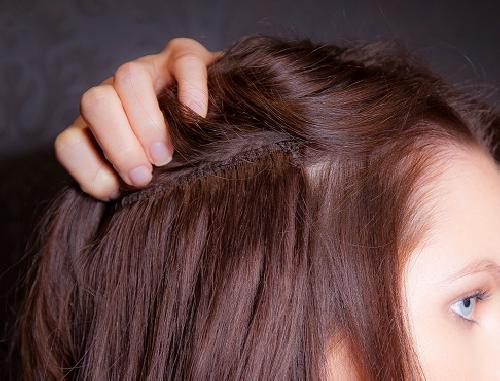Hair extensions are most popular hair accessory these days. Hair extensions add length and volume to your hair and enhance your beauty and style. Their purpose is both purely functional and decorative. People suffering from hair loss arising out of medical conditions can have them fitted to regain confidence while others desiring a different ‘do’ for aesthetic reasons can do the same. Hair extension is work as both fashion accessory and basic necessity for different people.

There are lots of techniques those used for applying hair extensions. You can select which is most convenient and suitable to your hair. Always before applying extension take proper suggestions from your hair stylist or professional.
Weaving is very much popular these days and it also do not harm your own natural hair and skin too. In weaving technique natural hair is woven and tracks are created. The wefts are then attached to these tracks to lengthen hair. This is a fastest process and lasts for long time. The only drawback is that you can’t follow regular hair maintenance procedures in case the weave is loosened.
Wearing a weave or extensions in your hair can give you the volume and length you long for. But you’ll need to take extra care to make sure they don’t break your hair or pull it out. Anyone can wear extensions and still have healthy hair.
Sew in Weaves are not bad, the main thing you have to remember when wearing a weave is to Take care of your own hair. Sew in weaves won’t give you freedom from your own hair, but if anything it kind of gives you more reasons to pay attention to your hair. Sew in, just like any other weave, has its ups and downs. They can protect your hair but if not “installed” correctly it can damage or break your hair. If you’re trying to grow your hair out it’s recommended that you install a “full head” of weave (which means none of the clients hair is left out.).
Even though this may make it harder to shampoo the crown of the head, it keeps the hair growing at the same rate and it can be used as a protective style. Extracurricular activities such as working out etc may not affect this style as much. When doing a “partial sew in” the crown of the clients hair is left out, then flat ironed or “hot combed” to blend in with the weave and then used to cover the tracks, this gives the client a more natural look. But, this can cause breakage on the client’s hair because you would have to flat iron your hair to keep it blended. And the big thing that comes along with breakage…no growth. So, while the braided hair is growing, the hair at the crown is broken and not growing because of heat damage.
If you keep remember some important facts then you will not survive any issue regarding Extensions. These are:-
Keep Extension Loose
The biggest mistake that women make with extensions is wearing them too tight. This puts a lot of tension on the hair follicles, which can make your hair fall out. At worst, it can contribute to the most common type of permanent hair loss in African-American women.
Getting extensions should not be painful or cause headaches. If it does, they’re too snug. Speak up! Ask your stylist to loosen them before continuing.
Clip-ins is the least damaging extensions because they can be removed quickly and require little to no glue or braiding.
Don’t Skimp on Shampooing
Gently shampoo at least once a week to keep your scalp at its healthiest. This reduces the buildup of product used for styling your extensions and dead skin cells.
- If you wear clip-in extensions, remove them first. Clean and dry them separately before reattaching.
- If your weave or extensions are sewn, bonded, or glued into your hair, separate your natural hair from them as best you can. Then wash, rinse, and condition your real hair separately from your faux hair. Towel-dry gently before you comb through or blow-dry.
Don’t Overdo It
Even if they still look neat and polished, don’t wear hair extensions for more than 6 weeks at a time. Weaves should be removed to allow for a thorough cleaning of the scalp and deep conditioning of the hair.
Take Care When Taking Extensions Out
The glue used to secure hair extensions to your head contains chemicals that can cause hair loss. If bonding glue is absolutely necessary, use bonding glue remover not only to take out the extensions but, more importantly, to ensure no glue remains in the hair. Any remaining glue can adhere to hair and become nearly impossible to remove without losing hair in the process.
If your hairline or scalp itches after your weave is removed, you may have an allergic reaction. Formaldehyde is used to preserve hair weaves, and it sometimes causes irritation. See a dermatologist. They can treat an itchy or irritated scalp.






